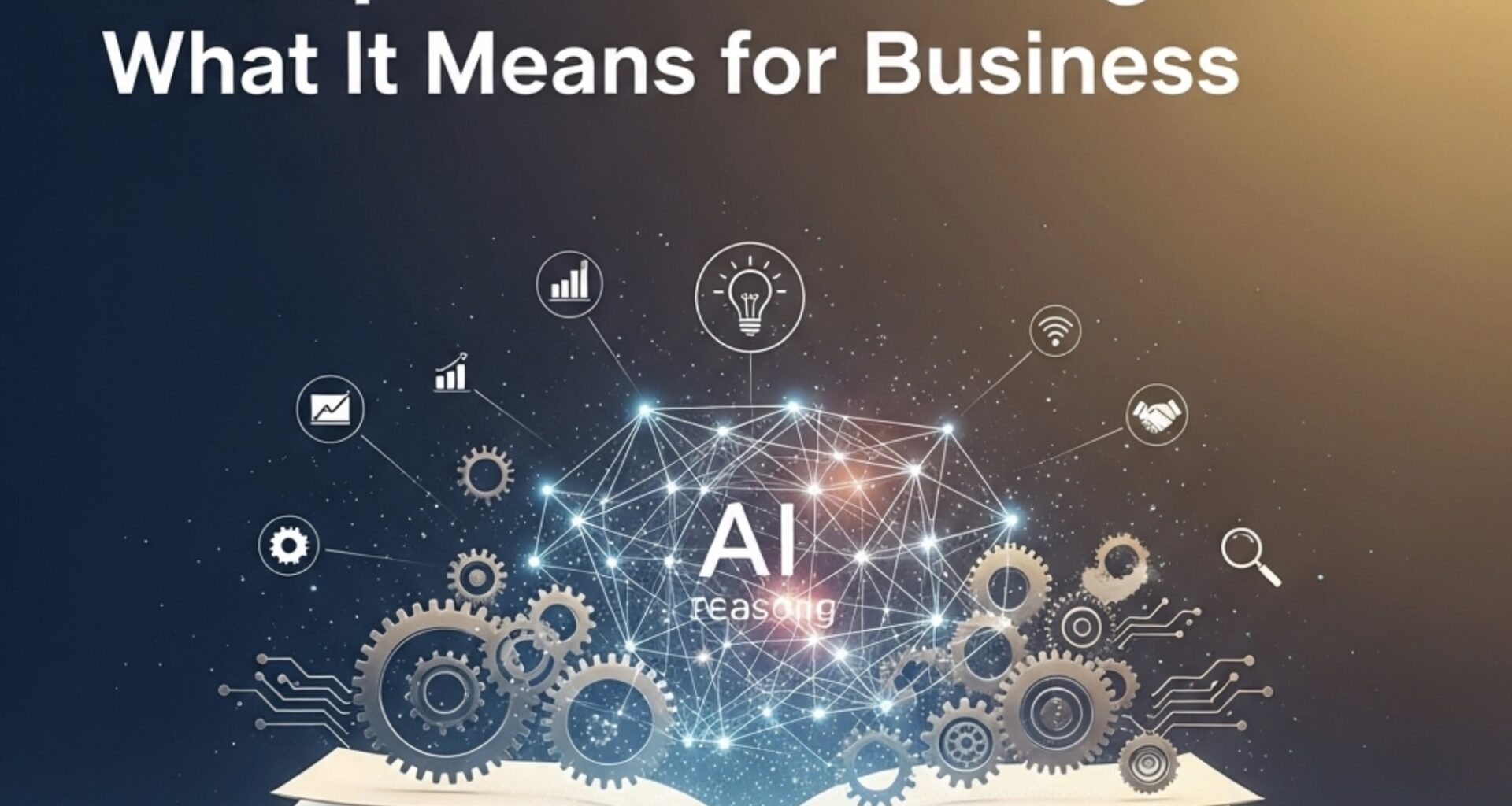Executive summary.
Nature’s publication of DeepSeek‑R1—the first major LLM to clear formal peer review—clarifies how a Chinese start‑up elicited strong reasoning performance chiefly through pure reinforcement learning (RL) rather than by copying outputs from competitors. In exchanges with referees, DeepSeek stated R1 was not trained on reasoning examples generated by OpenAI models, while acknowledging its base model learned from web data that likely contained some AI‑generated content. The paper details a cost‑efficient RL pipeline (including Group Relative Policy Optimization, or GRPO) and reports an RL phase cost of roughly $294,000 layered atop a previously trained base model. The result: an “open‑weight” model whose public availability and strong performance have already spurred imitation—and rattled markets. For business, this changes the calculus on AI build‑vs‑buy, model economics, competitive moats, compliance postures, and GPU/compute planning. Nature+2Scientific American+2
1) What the Nature paper actually establishes
- No distillation from OpenAI’s reasoning traces. Media speculation had suggested DeepSeek distilled OpenAI outputs. In referee exchanges, DeepSeek said R1 “did not learn by copying reasoning examples” generated by OpenAI models (while admitting the base model learned from the web, which can include AI‑generated content). This is as close to a formal record as businesses can expect without full training‑data disclosure. Scientific American
- Reasoning via “pure RL,” not massive human‑labeled sets. The peer‑reviewed account credits R1’s gains primarily to an automated, trial‑and‑error process that rewards correct answers rather than teaching from curated human reasoning chains. The method uses GRPO to score and improve candidate solutions efficiently, reducing the cost profile of the RL phase. Nature+1
- Open‑weight and widely adopted. R1’s weights are downloadable, making it the most‑downloaded model of its class on Hugging Face—meaning enterprises and labs can inspect and adapt it. Nature
- Peer review as a precedent. R1 is likely the first major LLM to undergo peer review, increasing transparency about methods, safety notes, and data categories—useful for regulated buyers evaluating model provenance. Nature
Alongside those clarifications, reporting earlier in the year captured OpenAI’s concern that DeepSeek might have “inappropriately” distilled its models; Nature and Scientific American describe how DeepSeek rebutted that specific claim in peer‑review exchanges, and outside observers (e.g., Lewis Tunstall of Hugging Face) note that replication attempts by others suggest DeepSeek’s RL “recipe” is sufficient to explain performance. Inc.com+2Axios+2
2) Why this matters for business now
A. The cost curve for reasoning shifts
If strong reasoning can be unlocked with relatively modest RL runs on a good base model, then capital intensity tilts from giant supervised datasets toward RL engineering, reward design, and evaluation tooling. While base pretraining remains expensive, the incremental cost to push a competent base toward high‑quality reasoning may be far lower than previously assumed—R1’s RL phase (~$294k) is a tangible benchmark for planning. Expect CFOs to press vendors and internal teams for clear unit‑economics tied to RL‑stage costs, not just pretraining budgets. Nature+1
Implication: Challenger firms can credibly target niche “reasoning‑first” advantages without nine‑figure training budgets; incumbents can extend existing bases more cheaply than green‑field pretraining.
B. Competitive moats migrate from data stockpiles to RL know‑how
If “pure RL” is enough to reach top‑tier results, then the value center moves to reward design, automatic verification, self‑checking behaviors, and scalable evaluation harnesses. That tacit process knowledge is harder to commoditize than static datasets. As Tunstall put it, “evidence is fairly clear that you can get very high performance just using pure reinforcement learning,” and DeepSeek’s “recipe for reasoning is probably good enough to not need” copying. Strategy should prioritize process IP (pipelines, evaluators, synthetic task generators, safety gates) over raw corpus hoarding. Scientific American
C. Open‑weight models pressure pricing and margins
Open‑weight access lets integrators compile, prune, distill, or fine‑tune for specialized latency or on‑prem requirements, often at lower cost than renting closed models. That exerts downward pressure on per‑token pricing for commoditized tasks and strengthens the case for edge or private‑cloud deployments in regulated sectors. Vendors built on resale arbitrage of closed APIs will feel margin compression as buyers ask, “Why not adapt R1?” Nature
D. Procurement and compliance: fewer “black‑box” excuses
Peer review raises the bar for model provenance documentation. Even without full dataset disclosure, a published training recipe, explicit denial of specific distillation practices, and safety notes give legal/compliance teams more to work with than opaque blog posts. Expect RFPs to require R1‑level transparency (methods, chips, costs, evaluation, safety mitigations) from all vendors. Nature
E. Market and supply‑chain ripple effects
R1’s arrival triggered a visible risk repricing across equities tied to the AI build‑out—especially GPUs—highlighting that cheaper paths to capability can reset demand expectations. Procurement should plan for volatile GPU pricing and availability, but also for lower total‑compute needs in RL‑heavy pipelines. DeepSeek’s reported training on Nvidia H800s (export‑controlled tier) underscores the geopolitical dimension of supply. Reuters+2The Guardian+2
F. From math & code to everything else
Researchers are already porting the R1 method beyond math/coding to other domains—exactly the kind of cross‑domain generalization enterprises want for workflows in finance, law, research, operations, and customer support. Expect rapid “R1‑style” updates to internal models and vendor roadmaps. Scientific American
3) Strategic plays by company type
Established software/platform vendors
- Product: Incorporate RL‑only stages to uplift existing models; showcase auditable reward functions and self‑verification tricks.
- Pricing: Prepare rate cards that reflect lower marginal costs for reasoning‑heavy SKUs; lean into SLAs, safety, and integration as differentiators.
- Trust: Publish R1‑like transparency docs (chips, costs, evals) to win regulated buyers. Nature
AI‑first challengers and startups
- Focus: Win by owning a vertical reward stack (domain‑specific correctness checks + tool‑using agents).
- Distribution: Use open‑weight baselines to stand up on‑prem or air‑gapped variants for enterprises that can’t ship data to public clouds.
- Moat: Protect pipelines and evaluators, not just weights. Nature
Enterprises adopting AI (finance, legal, healthcare, industrial)
- Risk: Treat the distillation debate as a procurement and IP checklist item. Require vendors to state whether any teacher‑student distillation used closed models in violation of ToS and to document safeguards against ingesting prohibited outputs. Inc.com+1
- Build vs. buy: Evaluate open‑weight + RL fine‑tune against closed API costs. Pilot R1‑style RL uplift on your data with automated verifiers (e.g., unit tests for code, rubric grading for reports). arXiv
Chipmakers, clouds, and integrators
- Compute mix: Expect smaller but spikier RL jobs; invest in inference‑time sampling throughput and short‑cycle training optimizations (queueing, caching, compilations).
- Services: Package “RL ops” tooling (reward management, evaluator registries, traceability) as managed services.
4) Legal, governance, and policy posture
- Terms‑of‑service & evidence standards. OpenAI publicly signaled concerns about “inappropriate” distillation against its ToS, which became a reputational event regardless of adjudication. Firms must harden data‑lineage logging: keep signed attestations of which models and outputs can and cannot be used, and automated guards against scraping competitor APIs. Inc.com+1
- AI‑generated content in web corpora. DeepSeek’s statement that the base model trained on the web (with possible AI‑generated material) mirrors the industry’s reality. Compliance should move from binary “AI‑content yes/no” to risk‑weighted ingestion policies (source reputability, license signals, watermark detection), plus human‑reviewed benchmarks to detect training‑time leakage. Scientific American
- Peer‑review norm. R1’s review sets a governance benchmark; buyers can require peer‑reviewed disclosures or equivalent third‑party audits for safety, data categories, and evaluation fairness. Nature
5) What to do in the next 90 days
- Run a “reasoning uplift” spike. Take a competent base model and reproduce an R1‑style RL pass on a narrow internal benchmark (e.g., reconciliation rules in finance, policy drafting checklists in legal). Measure delta in accuracy and unit cost. Document reward functions and auto‑checkers. arXiv
- Stand up RL‑Ops. Instrument pipelines with:
- a reward registry (what’s being optimized and why),
- verifier catalogs (regex/compilers/rubrics),
- traceability (what data and which tools influenced which weights), and
- model cards updated after each RL pass. arXiv
- Procurement refresh. Update RFPs to ask vendors for:
- distillation disclosures and ToS compliance logs,
- whether any closed‑model outputs trained the system,
- peer‑reviewed (or audit‑equivalent) documentation,
- cost and chip profiles for RL phases. Inc.com+1
- Portfolio and budgeting. Treat the January 2025 sell‑off as a stress test: revisit AI resource plans under scenarios where reasoning becomes cheaper faster than expected (and where open‑weights capture share). Adjust GPU commitments and hedge with open‑weight viability. Reuters+1
6) Scenario outlook (12–24 months)
- Base‑model scale still matters—but RL narrows the gap. Expect a barbell: frontier labs grow pretraining scale, while many enterprises and startups close the performance gap with RL on smaller bases—especially in constrained domains. arXiv
- Open‑weight adoption accelerates. R1’s accessibility plus maturing compliance narratives push more organizations to hybrid stacks (open weights + proprietary agents/tools), squeezing generic closed‑API margins. Nature
- Process IP becomes defensible moat. The most valuable assets are evaluators, reward engineering, and safety scaffolding, not just model size. Vendors will market “reasoning recipes” akin to playbooks—with reproducible gains and audits. Scientific American
- Policy pressure for transparency. With peer review on the table, regulators and large buyers will increasingly expect third‑party validation of training claims, reducing the defensibility of “trust us” narratives. Nature
Bottom line
The Nature paper doesn’t merely burnish DeepSeek‑R1’s credibility; it reshapes business assumptions about how high‑quality reasoning can be achieved and at what cost. Allegations about distillation may continue in the court of public opinion, but the peer‑reviewed record, independent commentary, and early replication attempts now point to a strategic truth: the next wave of AI advantage will be won by those who master RL‑centric training recipes, automated verification, and transparent governance—more than by those who simply spend the most on data and GPUs. Nature+1









